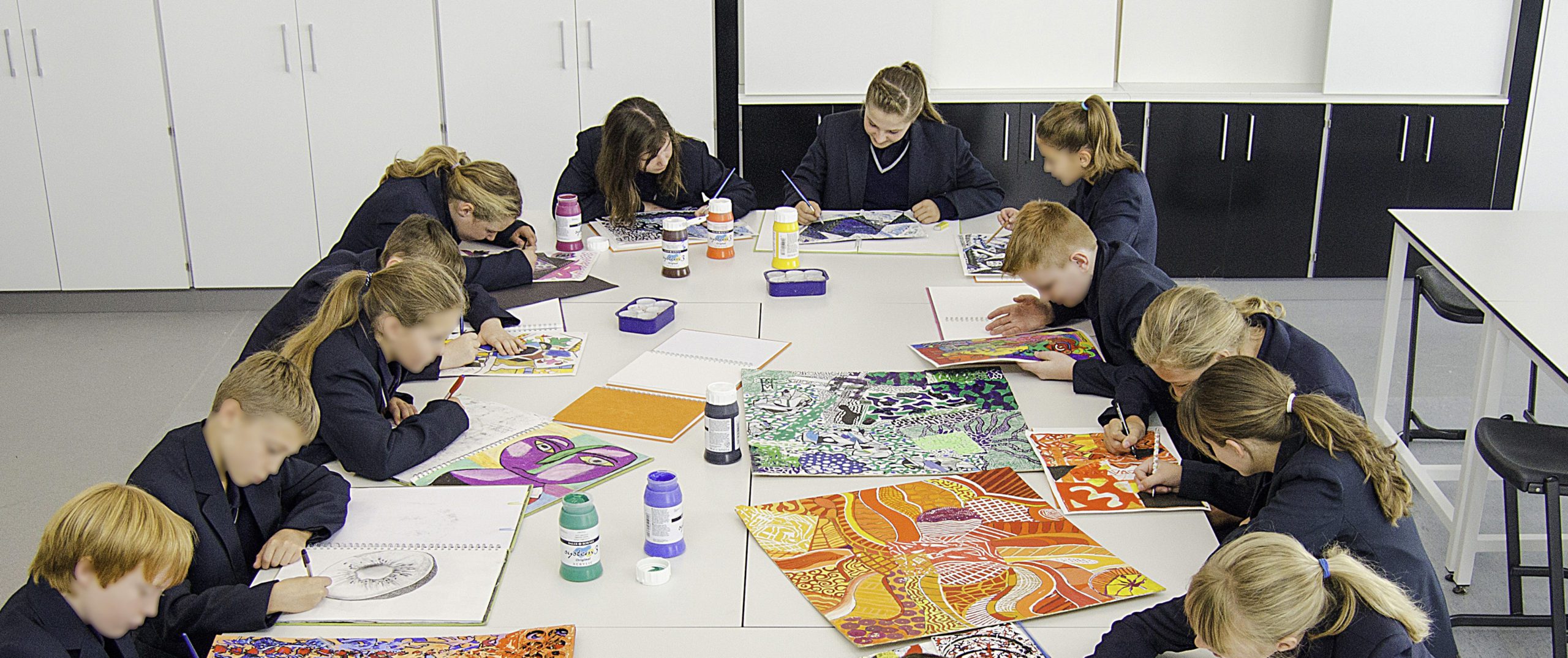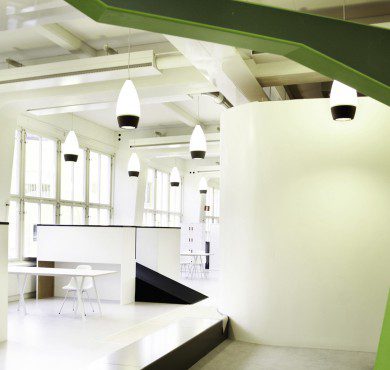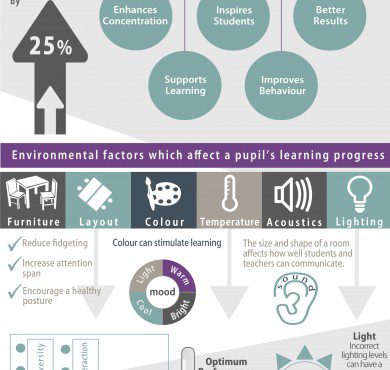Trends in School Design
The world of education is constantly changing. From new technologies, digital learning resources and wireless networks to different learning techniques such as collaboration, teaching styles and government regulations. As education is realigning to meet the needs for 21st century learning, classroom design must adapt and support new ways of teaching and learning.
Traditional learning is now becoming a thing of the past. Gone are the wooden flip-desks, teacher centred classrooms, ceiling mounted projectors with cabling to a laptop, inflexible desking and inflexible classroom layouts. Schools are now favouring versatile learning environments which can adapt to meet the changing needs of teachers and students.
Below is our guide to the key trends shaping education and school design …
![]()
New technologiesTechnology plays a huge part in our daily lives and has now become embedded into teaching and learning. With wireless networks, schools can embrace mobile learning which allows for smart phones, tablets and laptops to be used as resourceful tools in lessons. Visual and interactive learning spaces are becoming central to teaching with the introduction of smart boards, touch screens and green screen technology. Even food technology rooms have utilised new video based software which can stream a teachers cooking demonstration onto an interactive television. With the introduction of new technologies, the design of classrooms needs to be optimised to allow seamless cable management, provide secure storage spaces and ensure sufficient power and data sockets. |
Diverse learning stylesEverybody has different learning styles, from kinaesthetic and audio to visual and verbal. Classrooms need to be configured to suit these various approaches – a lecture style setting and layout may not be suitable for all. As such, learning spaces need to be flexible to support one-to-one tuition, independent study and group discussions. Science labs for example can be designed with hot corners to enable group collaboration whilst an IT suite with zig-zag desking creates short lines of communication- improving student-teacher visibility throughout the classroom. Another great way of meeting these various demands is to create zoned areas to break up a space which allows quiet areas of study as well as an area for team working. |
![]()
Learning in a ‘Parrot-fashion’Students do not learn effectively by simply copying from books. Students absorb information in different ways and teachers need to use a range of techniques to engage their students. One way that this can be encouraged is by making classrooms adaptable to support both practical and theory lessons. Classrooms need to be designed to allow students to move around and use equipment safely with minimum disruption. |
 |
PaperA theory exists that paper could become a thing of the past in schools. With the advance of digital technology, cloud computing and the introduction of tablet based learning. After all, it would be far more eco friendly to reduce paper use. |
Traditional Seating PlansIn the industrial era, schools developed as highly controlled environments that reflected the common workplace, in which it was necessary to have discipline. A sea of students all facing one teacher, is not the most effective way to utilise spaces and can affect the way teachers and students interact, their motivation and their self-esteem. Now, classrooms must adapt to suit the information age, reflected through more diverse forms of learning. |
Contact
Are you looking for inspirational interiors? Visit our educational spaces page to find out more.





